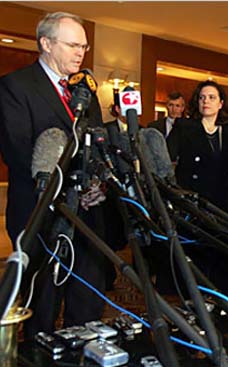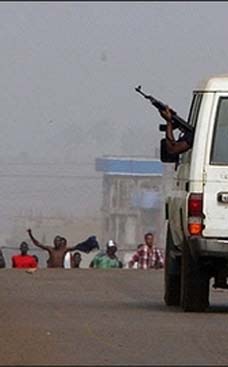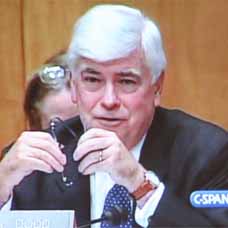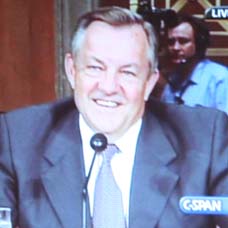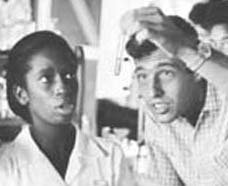
Rufina Amaya, the woman who was often identified as the last, or only, survivor of the massacre at the village of El Mozote, died last week. She was not, strictly speaking, the only survivor of that monstrous event, but she appears to have been the only one who emerged with her wits about her, a clear memory of what took place, and the will to describe how hundreds of people, including her husband and four of her children, were systematically butchered on Dec. 11, 1981, in an impoverished corner of El Salvador.
The events at El Mozote are no longer in dispute, but after a quarter of a century they are also no longer even a memory for the majority of Salvadorans, most of whom had not been born on the day when young girls were dragged screaming to the hills to be raped, and children cried out to their mothers as they were murdered. In this country, people who once argued passionately over El Salvador would be hard pressed to remember when they last talked--or cared--about the fate of that tiny country. Having pumped tens of millions of dollars into the Salvadoran military, the U.S. government paid a fraction of the amount for the reconstruction effort once the war ended. And Rufina Amaya, a small, dark-skinned peasant woman, who had no other weapon but her fierce will to live and to keep alive the memory of what she saw one vile day, is dead of a stroke at the age of 64. She will be remembered in El Salvador because she is now part of its history. She is part of the history of this country, too.
Alma Guillermoprieto writes: Rufina Amaya, the woman who was often identified as the last, or only, survivor of the massacre at the village of El Mozote, died last week
Shedding Light on Humanity's Dark Side
The Outspoken Survivor of Slaughter
By Alma Guillermoprieto
Special to The Washington Post
Wednesday, March 14, 2007; Page C01
Caption: Rufina Amaya, the woman who was often identified as the last, or only, survivor of the massacre at the village of El Mozote, died last week.
Rufina Amaya, the woman who was often identified as the last, or only, survivor of the massacre at the village of El Mozote, died last week. She was not, strictly speaking, the only survivor of that monstrous event, but she appears to have been the only one who emerged with her wits about her, a clear memory of what took place, and the will to describe how hundreds of people, including her husband and four of her children, were systematically butchered on Dec. 11, 1981, in an impoverished corner of El Salvador.
The massacre took place in the early days of the United States' involvement in El Salvador. In that conflict, radical leftist guerrillas tried to overthrow a ruling establishment utterly loathed by the population at large for its corruption and human rights atrocities. The Reagan administration intervened to train and equip the Salvadoran army, and to shore up the government against what it feared would become a red tide of communism lapping at the very borders of the Rio Grande.
The news articles describing a rampage of murder by the army in a place called El Mozote were written by me and by my friend and colleague Ray Bonner. In early January of 1982, Bonner, who was working for the New York Times, told me that he and the photographer Susan Meiselas had been invited by the guerrilla leadership to tour the rugged province of Morazán, an area of El Salvador bordering on Honduras where the guerrillas held sway, and which reporters had long been eager to visit. After frantic and pleading calls to my own guerrilla media contacts in Mexico City, a trip was arranged for me as well. The Washington Post, for which I was a stringer at the time, approved the trip. We did not suspect that I was being allowed into guerrilla territory to report on a massacre.
Traveling only by night and on foot through government-controlled territory, I reached the guerrilla-held region of El Mozote as Bonner and Meiselas were on their way out. My camera had been damaged during a river crossing and so the next day I saw, but could not photograph, a ruined chapel and three adjoining adobe houses where the charred remains of dozens of victims--it was impossible to tell how many--lay half-hidden among the rubble. Along the paths connecting El Mozote to smaller hamlets, parched corpses lay in the baking sun. There were bodies in the abandoned cornfields, in one-room houses where a pedal-operated sewing machine was a sign of great wealth, in the citrus groves where birds still chirped. There were, in fact, bodies everywhere--children, men, women, draft animals -- and the air reeked.
I was taken to see Rufina Amaya, a small-boned woman in her thirties, dressed like any campesina in a skirt and short-sleeved blouse, a frilly apron and plastic sandals, and with a face that seemed to have turned to stone. In precise detail she told me the same story she would repeat throughout the years, and that forensic evidence would confirm a decade later.
An army officer who was a friend of her husband's, she said, had told the villagers early in December not to worry about a coming offensive against the guerrillas, because El Mozote, which had a large evangelical population, was not known to be subversivo, or subversive.
The troops arrived the following day and, after an initial brutal search, told the villagers that they could return to their homes. "We were happy then," Señora Amaya recalled. " 'The repression is over,' we said."
But the troops returned. Acting on orders, they separated the villagers into groups of men, young girls, and women and children. Rufina Amaya managed to slip behind some trees as her group was being herded to the killing ground, and from there she witnessed the murders, which went on until late at night. An army officer, told by an underling that a soldier was refusing to kill children, said, "Where is the sonofabitch who said that? I am going to kill him," and bayoneted a child on the spot. She heard her own children crying out for her as they met their deaths. The troops herded people into the church and houses facing a patch of grass that served as the village plaza. They shot the villagers or dismembered them with machetes, then set the structures on fire. At last, believing they had killed all the citizens of El Mozote and the surrounding hamlets, the troops withdrew.
My article appeared in the first edition of The Washington Post, and Ray Bonner's ran in the second edition of the Times, on Jan. 27, 1982.
Now that the bones of the victims have been unearthed, and cleaned, and counted, and provided with proper burial, it is astonishing to think that for years Rufina Amaya was called a liar. What she was describing, after all, was the brutal murder of her flesh and blood, of her neighbors and fellow worshipers at the chapel. Why would she have lied about such things?
The problem was that the subsistence farmers who died at El Mozote and in the surrounding villages were simply fodder in one of the last battles of the Cold War. What was at stake in believing Rufina Amaya's testimony, along with Susan Meiselas's photographs and our firsthand reports, was the Reagan administration's continued support for the Salvadoran government. Because this support was so controversial back home, it depended on twice-yearly congressional certification that the Salvadorans were making progress on human rights.
In congressional hearings and to the press, high-level officials roundly denied that any atrocity had taken place. Bonner was called a liar in a Wall Street Journal editorial. I was not. Rereading our stories from that day, I reflected that I was spared thanks to the well-meaning, and tortured, editing of my original story in The Post, which, as published, was full of phrases like Rufina Amaya "broke down only when speaking of what she said were the deaths of her children." What she said were her children, or what she said were their deaths? Even the syntax was bad.
I bring this up simply to point out how even powerful and courageous news institutions can be intimidated by the White House. The Reagan administration continued to certify that the army was indeed improving its human rights performance.
The massacre at El Mozote remained a disputed fact until a peace treaty was signed between the government and the guerrillas of El Salvador in 1992. In the face of strong government opposition, members of the Argentine Forensic Anthropology Team were appointed by a U.N. truth commission to excavate the zone, and exhumation work continued until 2004. At that time, the remains of more than 300 men, women, children and infants had been recovered in the main killing grounds, but the list of victims from the village and nearby hamlets includes more than 800 names. As far as is known, this was the single largest massacre to take place in this hemisphere in modern times.
The events at El Mozote are no longer in dispute, but after a quarter of a century they are also no longer even a memory for the majority of Salvadorans, most of whom had not been born on the day when young girls were dragged screaming to the hills to be raped, and children cried out to their mothers as they were murdered. In this country, people who once argued passionately over El Salvador would be hard pressed to remember when they last talked--or cared--about the fate of that tiny country. Having pumped tens of millions of dollars into the Salvadoran military, the U.S. government paid a fraction of the amount for the reconstruction effort once the war ended. And Rufina Amaya, a small, dark-skinned peasant woman, who had no other weapon but her fierce will to live and to keep alive the memory of what she saw one vile day, is dead of a stroke at the age of 64. She will be remembered in El Salvador because she is now part of its history. She is part of the history of this country, too.






